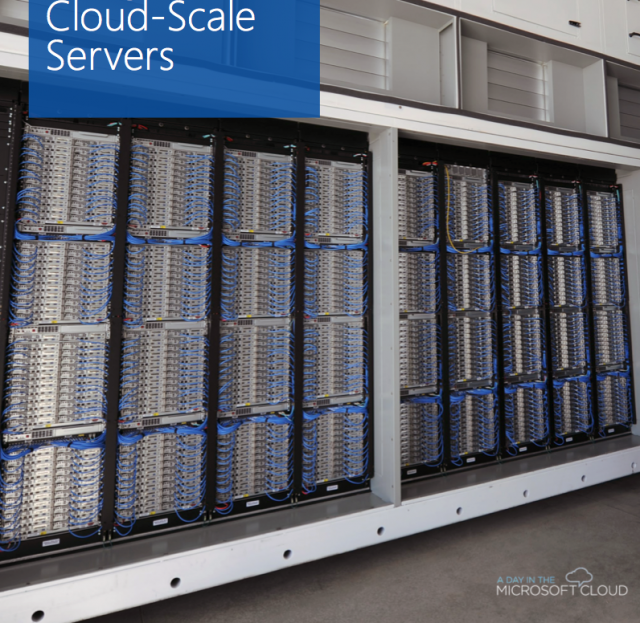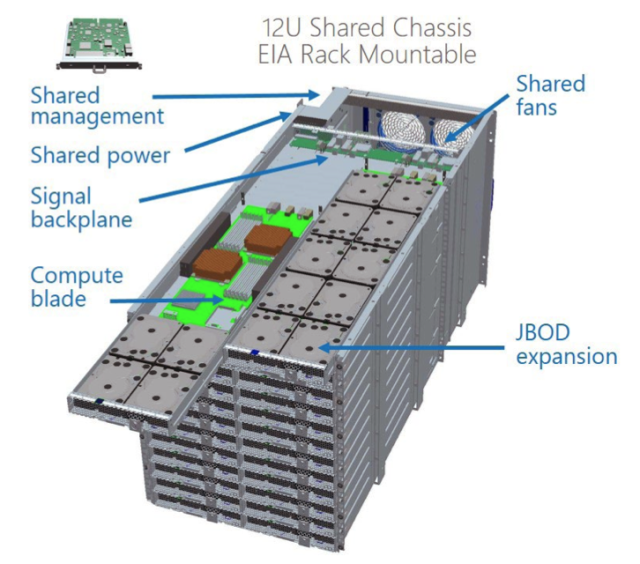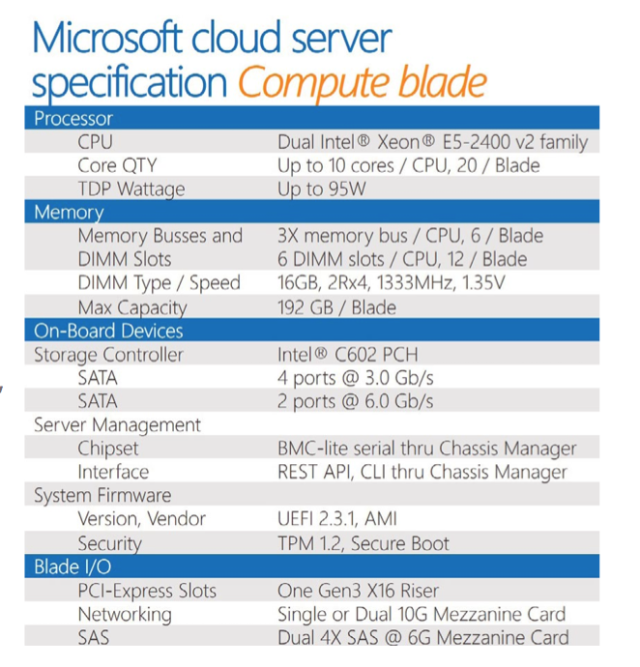
Microsoft has joined the Open Compute Project, a consortium that Facebook created to share the designs of servers and other equipment that power the Internet's largest data centers.
Like other Internet giants, Microsoft designs its own servers to be more efficient than standard boxes sold by the likes of HP and Dell. While Google has mostly kept its designs secret, Facebook has made its server and rack specifications public and has urged others to do the same. In theory, companies can swap best practices, and any vendor can sell servers identical to the ones that power Facebook's data centers.
Microsoft joining Open Compute boosts the chances that the project might have some impact on the server industry.At the Open Compute Summit beginning today in San Jose, Microsoft will show off three designs that it came up with in collaboration with HP, Dell, and Quanta, Microsoft cloud and enterprise vice president Bill Laing told Ars last week.
"We worked with them on sharing the specification, and they've done designs for us," Laing said.
HP and Dell could be threatened by Open Compute because it might allow companies to purchase "vanity free" equipment directly from original design manufacturers like Quanta. HP and Dell have both warmed up to the project, though, potentially allowing them to capitalize on a new market opportunity.
But that's no guarantee that the companies will sell the servers designed in conjunction with Microsoft. "They have to decide on whether they go to market or whether there's demand," Laing said.
As we've described in previous coverage, Facebook has found that it can significantly decrease power consumption by stripping out extraneous components found in standard HP and Dell servers. Even the plastic bezel containing the server's brand logo can increase power costs because it takes "fan power to pull air through the impedance caused by that plastic bezel," Facebook VP of Hardware Design and Supply Chain Operations Frank Frankovsky told Ars last year. Open Compute servers contain no such frivolities.
A million servers
Microsoft has more than 1 million servers across all of its data centers, which run cloud services such as Windows Azure, Office 365, and Bing, as well as Microsoft's internal applications.
The newly public designs have been rolled out to Microsoft data centers over the past 9 or 10 months, and Microsoft intends to make them the standard for future deployments.
"They offer dramatic improvements over traditional enterprise server designs: up to 40 percent server cost savings, 15 percent power efficiency gains and 50 percent reduction in deployment and service times," Laing wrote in a blog post. "We also expect this server design to contribute to our environmental sustainability efforts by reducing network cabling by 1,100 miles and metal by 10,000 tons across our base of 1 million servers."
Besides making its hardware designs public, Laing said Microsoft "is open sourcing the software code we created for the management of hardware operations, such as server diagnostics, power supply, and fan control."
The physical servers gain efficiency by sharing resources such as power and cooling and minimizing the amount of materials needed to build them. Microsoft shared the designs of two types of server blades and the chassis that houses them.

"Microsoft’s cloud server architecture is based on a modular high-density chassis approach that enables efficient sharing of resources across multiple server nodes," a Microsoft document said. "A single 12U chassis can accommodate up to 24 server blades (either compute or storage), where two blades are populated in each 1U slot. A rack can hold three or four chassis depending on the rack height.
"The chassis provides common functions to the blades—highly efficient shared power and cooling, integrated and scalable management, and wiring connectivity to the data center network spine," the document said. "By moving these common functions into the chassis, the cost can be reduced for optimal TCO [total cost of ownership] and this approach allows for operating at scale where a typical single deployment might involve tens of thousands of servers at a time."

The sharing of resources lets Microsoft create a variety of configurations and replace compute, storage, or networking components individually without having to buy a whole new server. That continues Microsoft's modular data center designs also seen in its "data center containers."
Microsoft's Open Compute document continues:
The hardware system provides standardized interoperability at the blade, chassis and rack level by modularizing the interfaces between these components. The hardware system utilizes a novel mechanism for blade installation and removal, utilizing a cable-free approach for enabling a plug-and-play infrastructure. This approach allows us to use the same set of core building blocks to easily create different configuration topologies for specific cloud applications and different global data center environments.
The result is streamlined manufacturing and assembly, the re-use of common components across deployments for volume economics, simplified maintenance operations during production usage, the ability to target technology refreshes independently across compute, storage, and networking components, and the ability to reuse infrastructure across decommissioning cycles.
The design also supports high density deployments, with up to 96 servers in a 52U rack. This allows better cost amortization for common elements across the server blades, and is a good option for space constrained environments.
While Microsoft and Facebook are by far the largest champions of Open Compute, Laing said that Microsoft hopes to learn from the community. Microsoft also wants to "deliver a consistent cloud platform," in which customers who use Microsoft's public cloud services could also build similar platforms in their own data centers and connect the two.
In addition to public specifications for servers, motherboards, storage, racks, and interconnects, the Open Compute Project last year declared its intent to create a top-of-rack switch that could run just about any networking software and replace hardware typically sold by Cisco. Facebook is expected to announce more about the future of the Open Compute Project at its conference today.
reader comments
57